
by Mark Smiley | Jun 23, 2017 | Main Articles
Ruby Hill Park Turned Into Music Venue
by Glen Richardson

 Mayor Michael Hancock’s administration’s unceasing efforts to reduce parkland available to Denver residents and to monetize what remains was greatly enhanced by a scheme to turn Ruby Hill into an outdoor music venue throughout the year and convert adjoining Overland Park Golf course into a mega concert location for six weeks each summer.
Mayor Michael Hancock’s administration’s unceasing efforts to reduce parkland available to Denver residents and to monetize what remains was greatly enhanced by a scheme to turn Ruby Hill into an outdoor music venue throughout the year and convert adjoining Overland Park Golf course into a mega concert location for six weeks each summer.
The permanent Levitt Pavilion at Ruby Hill has been constructed at 1380 W. Florida Ave. near I-25 and Santa Fe along the Platte River. The first event is scheduled for July 20, 2017.
There are supposed to be 40 to 50 “free concerts” and 15 to 20 ticketed events. One resident noted: “There is no such thing as a ‘free lunch’ or a ‘free concert.’ Somebody is paying and somebody is making money. We know the city government is totally corrupt. The whole thing has the stench of a con job which we will learn about only later, if at all. I believe nothing the mayor or the members of the City Council say. Pockets are being lined throughout the city.”
The venue is projected to be about two and a half times bigger than Red Rocks Amphitheater, according to the Levitt website. The first free concert is Slim Cressna’s Auto Club. The first paid event ($40, $55 and $75) is the following night (July 21) when
UB40 legends Ali, Asto and Mickey, with special guests Matisyahu and Raging Fyah entertain. The next free concert is the Stone Foxes playing on July 23. Free August concerts are The Suffers on Aug. 3, John Fullbright on Aug. 4 followed by Gaby Moreno on Aug. 24. Levitt Pavilion’s first Beer Festival on Aug. 26 is expected to keep the “Rockin’ Ruby Hill Summer” hot as they’re adding a free concert by Karl Denson’s Tiny Universe considered as one of the best live bands on the planet. Denson now serves as the saxophonist in the Rolling Stones.
The just completed Pavilion itself is a metal mesh-clad building under-laid with a LED screen surrounding the stage. The stage is 43-ft. wide in the front, 30-ft. deep and 60-ft. wide in the back. The stage is large enough to hold the entire Colorado Symphony. The venue includes built-in food truck pads plus concessions. The venue’s official capacity is 7,500 concertgoers, with about 2,500 fitting within the main area where alcohol is allowed. But as executive director Chris Zacher reminds attendees, “The good thing about the venue is we have a movable fence line!”
Choir Of Concern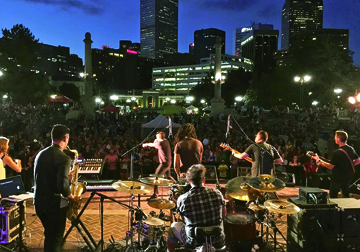
If huge crowds and the musical rebellion starting up at Levitt Pavilion isn’t enough to keep Denver’s south neighborhoods awake at night the City of Denver’s approval on June 20 for a three-day festival across the Platte River at the foot of Ruby Hill on the Overland Park Golf Course beginning in Sept. 2018 has even more detractors. That festival will be an annual event featuring musicians from a variety of genres on multiple stages, as well as food, art and culture. The private promoter of the admission-based music festival says it could host “between 60,000 and 200,000 people over three days.” The historic golf course is a quiet, countrified space just north of Evans Ave., east of South Santa Fe Blvd.’s rushing traffic and west of the Platte River. Many neighborhood residents had hoped to see it remain that way. Proponents, however, say “it will put Denver on the map and bring money into the neighborhood.”
Giant entertainment firm AEG pulled out and Superfly, the company behind both the Bonnaroo in Manchester, Tenn., and Outside Lands Festival in San Francisco is the winner. They receive a five-year, six-week contract annually with the city and the golf course. The amount of time allows for setup, teardown and damage repair. The City Council approved contract is for five years at an annual rate of $200,000, with “additional monetary and non-monetary considerations,” to produce the annual three-day music festival at Overland Golf Course located in Council District 7.
The June 20 Overland Golf Course deal (City Council Bill 17-0678) was offered by District 8 Council member Chris Herndon and received unanimous approval. Wayne New was absent. Citizens briefed on the proposal say the festival will be modeled on the Outside Lands Festival in San Francisco. That event drew 210,000 people last August.
Helene Orr, who lives on West Jewell Ave. across from the Overland Park course, says, “It wasn’t a real process to me. We aren’t in the contract. We can say ‘XYZ’ but how will we know?” Her worry: She believes the city intends to turn Overland Park into a permanent, large-event venue and notes that the Levitt Pavilion opening this month will already host 65-70 concerts per year. While Denver has more concert venues than say Austin or Nashville, it doesn’t have a Sixth Street or Music Row comparable to those cities. Valley music fans truthfully want Ruby Hill to become that location and so does the Mayor’s office and Parks & Recreation Department.
Listen To Tone
Area residents around Levitt Pavilion say they will be closely monitoring noise complaints and sound levels during both free and paid concerts beginning this month. Levitt officials say they hope to work with neighborhoods and make sound adjustments. The reassurances, however, aren’t likely to mollify neighbors opposed to the venue, especially once the fall school season begins.
In addition to the Valley’s music interests, there are supporters for next year’s mega concert on the Overland Golf Course. Rob Lovell and Rana Razzaque who live directly opposite the driving range — where the main stage would be built — argue, “This is progress.” It will be noisy for three days, but it will bring in world-class musicians. “A few large trucks are a small price to pay for a top-notch festival,” says Lovell. Razzaque believes the event will increase infrastructure into the area. A dds resident Paul Bodor, “I didn’t hear any downside that concerns me enough to cloud my enthusiasm.”
dds resident Paul Bodor, “I didn’t hear any downside that concerns me enough to cloud my enthusiasm.”
Before the Overland proposal was approved, the tone of the debate was less harmonious. “Parks are under attack all over the city and we have to band together to maintain our quality of life in Denver,” says parks activist Bridget Walsh. She has been critical of the Hancock administration’s use of City parks in the past. Mara Owen, president of the Overland Park Neighborhood Assn., says residents have been assured the golf course event would only go forward if community groups agreed it was a good idea. But Walsh adds: “Owen and I fear 200,000 people on a golf course will come to a no-good end.”
City Has The Brass
Denver put plenty of backspin o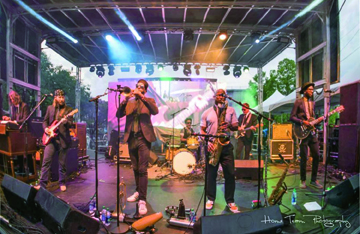 n the proposal because with approval the city has scored an ace: The city will get between $1.5-$2 million from lease fees and seat taxes per year, more as attendance increases. District 7 City Councilman Jolon Clark calls the festival “an opportunity with an estimated $60 million economic impact.” Clark acknowledges that the money will go to the City’s general fund and not to the neighborhood. He adds, however, “I’ll fight to the death to secure the neighborhood a fair share.”
n the proposal because with approval the city has scored an ace: The city will get between $1.5-$2 million from lease fees and seat taxes per year, more as attendance increases. District 7 City Councilman Jolon Clark calls the festival “an opportunity with an estimated $60 million economic impact.” Clark acknowledges that the money will go to the City’s general fund and not to the neighborhood. He adds, however, “I’ll fight to the death to secure the neighborhood a fair share.”
Adding to the City’s winning scoring game is Denver Parks & Recreation Executive Director Happy Haynes. She promised in a press release to “fulfill the guidelines set forth during the community input process.” Furthermore, she adds, the City will “hold the event organizers accountable to protecting that, which is valuable to our city, its residents and neighborhoods.”
Continuing public concerns and questions about the Overland Golf Course deal can be categorized into four main themes: 1) Concerns about impact to the golf course; 2) Concerns about impact to the neighborhood; 3) Benefits that would come to the golf course and surrounding area; and 4) Concerns regarding the contract length, local artists, affordability and revenue to the City. Despite the approval many residents say they have mistrust toward the city and wanted specific guarantees and accountability. Furthermore, residents remain uneasy about parking, trash, noise and community safety.
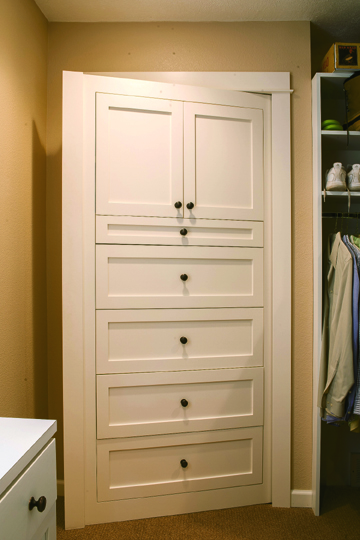
by Mark Smiley | Jun 23, 2017 | Main Articles
It’s The Latest And Greatest Rage In Lowry And Stapleton
by Julie Hayden
 It’s no secret the Denver area has one of the hottest real estate markets in the country. But in the new homes in Lowry and Stapleton, the hottest “must have” amenity is a secret. A secret room, that is, a “panic room” or the now-preferred term — a “safe room.” And it’s no longer just for the highest of the high-end homes. Safe rooms are becoming much more mainstream in the Cherry Creek Valley.
It’s no secret the Denver area has one of the hottest real estate markets in the country. But in the new homes in Lowry and Stapleton, the hottest “must have” amenity is a secret. A secret room, that is, a “panic room” or the now-preferred term — a “safe room.” And it’s no longer just for the highest of the high-end homes. Safe rooms are becoming much more mainstream in the Cherry Creek Valley.
Celebrities on the A-List have long invested in safe rooms. Top of the line bunkers offer much more than security from nuclear fallout or terrorist attacks. Some include everything from wine cellars, to Jacuzzis and storage for sports cars.
Lady Gaga’s $23 million dollar Malibu mansion has horse stables, a bowling alley, guest cottage and a safe room off the master suite.
The Napa Valley estate of late comedian Robin Williams featured not one but three safe rooms.
These are not just bunkers for billionaires anymore. One local realtor talking about safe rooms says, “Oh, they’re definitely here in homes in the metro area.” You may not see “safe room” cited in the listing advertisement, but he says, “There are definitely homes in the Denver metro market that include safe rooms as part of home security.”
And certain contractors say “safe rooms” are all the rage in the Lowry and Stapleton areas.
Safe Room Remodel
One Stapleton resident tells us he just finished a remodel project that includes a safe room. The family has young children and he says the project started as a reading and relaxing room for his wife. But the husband saw a booth at a recent home show for Hidden Doors By Design and decided to expand the project into a hidden safe room.
The secret door looks like a regular bookshelf from one sid e. But it’s actually fortified, weighs nearly 500 pounds and slides open on ball bearing rollers to reveal the hidden safe room, complete with security communication lines. He estimates the entire project cost $6,000.
e. But it’s actually fortified, weighs nearly 500 pounds and slides open on ball bearing rollers to reveal the hidden safe room, complete with security communication lines. He estimates the entire project cost $6,000.
“There’s only one thing, “ he jokes. “We just had a baby so my wife never has any time to relax and read in her special room. “Still, he adds, It gives us some peace of mind knowing the safe room is there to protect us should we ever need it.”
Hiding In Plain Sight
A key requirement for any safe room is that it be hidden. Peggy Reed, owner of Hidden Doors By Design in Broomfield says her business is booming. She founded the Denver area company in 2011 and says she’s seeing an increase in the number of homeowners who want a hidden door to conceal a secret room. “I think it’s people who are concerned about safety,” she says and adds, “There is also an increase in people who store their guns and other valuables in a safe but now want the safe hidden as well. “
Reed doesn’t want to reveal security secrets, but explains the doors are fortified with an internal steel structure and look just like a bookcase or drawers and can pass the closest scrutiny. The homeowner accesses the hidden safe room with a remote-control device, which can be concealed anywhere, even disguised as a plant.
Hidden Doors By Design handles exclusive high-end requests. “We have two hidden doors being installed in a $5 million home in the north metro area,” she says. But a growing number of clients have homes in neighborhoods like Lowry and Stapleton. “We sell hidden doors to customers all over the metro area,” Reed notes. The cost varies depending on the design but most of their doors sell for $3,000 to $4,000 dollars.
Popularity Skyrockets
Panic rooms have been a hot topic since the 2002 movie where actress Jodie Foster played a mother huddling with her daughter in a fortified room while burglars invaded their home. In recent years, safe room consultants’ websites boast business is skyrocketing, with more and more people requesting the added security of a safe room.
The actual design is limited only by the homeowners’ imagination and budget. But in general, a safe room is an ultra secure area inside your home where your family can safely retreat during a home invasion, while calling for help and waiting for police to arrive.
And it’s not just for home security. Glendale Deputy City Manager Chuck Line won’t name names, but says, “There are businesses in Glendale that have safe rooms, places where the staff can safely retreat during an invasion or robbery until police get on scene.”
Line explains Glendale does not have any specific requirements regarding safe rooms. “But they have to meet the basic building codes covering things like access and fire protection.” Line points out most safe room building plans don’t actually use the term “safe room” with an arrow pointing to the secure location. But he says a sharp observer looking at building blueprints might notice a room co nstructed with specific fortified materials. “That would indicate it’s probably a safe room,” Line says.
nstructed with specific fortified materials. “That would indicate it’s probably a safe room,” Line says.
Peace Of Mind — Priceless
As safe rooms become more popular, they’re also becoming more affordable. Per the websites of safe room contractors, you could fortify a walk-in closet for a few thousand dollars. On the other end of the financial spectrum, you could spend millions of dollars for one of the most luxurious bunkers.
But at a minimum, most secure safe rooms include a steel reinforced, vault type door, ballistic or bullet proof construction materials, a ventilation system, security monitors, survival supplies and back-up communications and energy systems.
Reed says whether you’re looking at a remodeling project or buying a new home, there are safe room options at just about any price point. And the peace of mind is priceless.

by Mark Smiley | Jun 23, 2017 | Feature Story Middle Left
by Amy Springer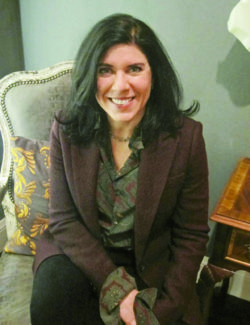
In a lot of ways, many mornings it feels as if our fine country has lost its collective mind. Between the name calling, the satirical “beheading” of the president (which was about as unfunny as the caricatures of Obama being lynched) and the Chinese Fire Drill at 1600 Pennsylvania Avenue, it has become increasingly more difficult to maintain one’s sanity.
And so it was, on Memorial Day 2017, that the Internet lost its collective mind when an artist in New York decided to create a rudimentary dog and place it symbolically peeing on the leg of a statue in New York City.
To understand this reaction, context is required. After the stock market collapse of 1987, an artist named Arturo DiModica created a massive, shiny Charging Bull sculpture and placed it in front of the New York Stock Exchange. Although it was initially removed, the city later reinstalled it near Wall Street in the Financial District. If you’ve visited the city, it’s hard to miss the 11 foot, three-ton monument, and it has withstood the test of time to become a landmark in its own right.
On March 7 of this year, the four-foot “Fearless Girl” statue was placed defiantly in front of Charging Bull, purportedly as an homage to “International Women’s Day.” Kristen Visbal was the artist who created the girl, but it was commissioned by State Street Global Advisors, a massive, multi-trillion-dollar asset management company. Unlike Charging Bull, Fearless Girl was not merely the expression of its artist, but rather instead the brainchild of State Street’s own advertising agency.
The placement of Fearless Girl drew the ire of Mr. DiModica who claimed to the New York Post that its placement made him “sick.” He immediately announced plans to sue State Street Global Advisors for trademark and copyright infringement. As reported by the New York Post on April 12, 2017, Mr. DiModica’s attorneys asserted during a press conference that “the placement of the statue of the young girl in opposition to ‘Charging Bull’ has undermined the integrity [of] and modified the ‘Charging Bull’ … The ‘Charging Bull’ no longer carries a positive optimistic message. Rather it has been transformed into a negative force and a threat.”
Enter Alex Gardega, a New York artist and now cause celebre who decided
to take
matters into his own hands on Memorial Day and, gasp, create an ugly dog sculpture to be placed peeing on the leg of Fearless Girl. Quelle Horreur! Alex called the dog “Sketchy Dog,” admitting that it was not intended to be a thing of beauty, but rather a statement of artistic expression.
In the interest of full disclosure, Alex Gardega is a personal friend of the family and we own many of his works. We know him as a quirky starving artist, but incredibly adept at self-promotion. Exhibit A: Alex’s dog sculpture quickly made both the national news (CBS, NBC, New York
Times, Washington Post, Daily Best, etc.) and international news (Daily Mail UK). It was featured prominently on blogs and social media, and Alex used the exposure to make a point about political sensitivity and artistic expression, both of which I believe bear repeating here. Most of Alex’s actions speak louder than his words, so in some ways I may be ascribing unintended motives to Mr. Gardega, but knowing hi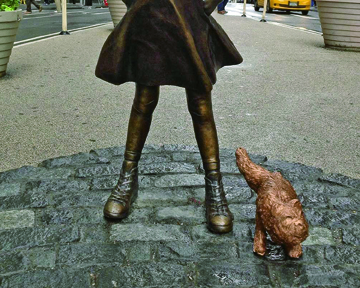 m as I do, I’m sure he’d be ok indulging me.
m as I do, I’m sure he’d be ok indulging me.
First, as one commentator deftly noted on social media, if Fearless Girl can “bogart” Charging Bull, then “Sketchy Dog” can surely “bogart” Fearless Girl. Following that lead, Bill Bramhall’s May 31 cartoon for the New York Daily News portrayed a “Kicking Granny” sculpture lining up on Sketchy Dog which, in turn, is peeing on Fearless Girl while she is staring down Charging Bull. In terms of publicity, one can only think, “well-played Mr. Gardega.” Alex claimed that he was motivated primarily by the plight of Mr. DiModica, presently suffering from cancer, and from this perspective, it’s hard not to appreciate Mr. Gardega bringing this issue to the public’s attention.
The second, more sticky issue involves the conclusion many have drawn that by placing the dog at the feet of Fearless Girl, Alex must be a misogynist and afraid of women. It is frankly shocking to google Mr. Gardega and observe the venom that has been publicly spewed on him on account of Sketchy Dog. I think it simultaneously exceeded his wildest expectations and scared the crap out of him. He recently acknowledged to me his dismay in receiving hate mail, including letters up three pages in length “as if I could read all that.”
It is worth noting that right after the election last November, mainstream outlets such as Politico published articles to the effect that “the left” a/k/a liberals, “Created Trump.” Per Rob Hoffman’s November 20, 2016 article for Politico: “The general attitude to the left was: Disagree with us? You’re probably racist, xenophobic, sexist, bigoted or all of the above.” It was the clarion call of Yale University one year earlier when “outraged” students rallied against what they termed “offensive” Halloween costumes that some students found “culturally unaware and insensitive.” This prompted one faculty member to express her frustration, questioning why costumes could not be obnoxious, inappropriate or even progressive.
The backlash was swift, with hundreds in the fragile student body condemning the Yale teacher’s argument that free speech usurped the objective of protecting students from hurt feelings or personal offense. It was, in a word, ridiculous. When I was a kid trick-or treating in Denver, if it was warm I was a belly-dancer and if it was cold, I was a gypsy (a/k/a belly-dancer with a turtleneck). I shudder to think of the uproar this would have created today.
It is not beyond the realm of possibility that this over-sensitivity and downright self-righteousness that is often affiliated with “liberalism” set in motion the forces leading to the election of Donald J. Trump and the overall view that liberals are elitist, unable to take a joke and overly judgmental. Mr. Gardega’s Sketchy Dog peeing on the leg of Fearless Girl keeps this cautionary tale alive.
I hate to blow the ending, but Alex is neither a misogynIST nor anti-feminIST. He is an artIST and a friend, trying to make a living and call attention to his craft. Love him or hate him, this type of hysterical vilification evidences that lessons still have not been learned, and that mistakes in judgment will likely continue, even with the knowledge of how catastrophic and disastrous the result.

by Mark Smiley | Jun 23, 2017 | Editorials
In Alexandre Dumas’ beloved historical novel The Three Musketeers, a young man named d’Artagnan travels to the capitol and joins the Three Musketeers of the Guard (Athos, Porthos and Aramis). Together they fight off the minions of Cardinal Richelieu, the evil minister to the weak King Louis XIII.
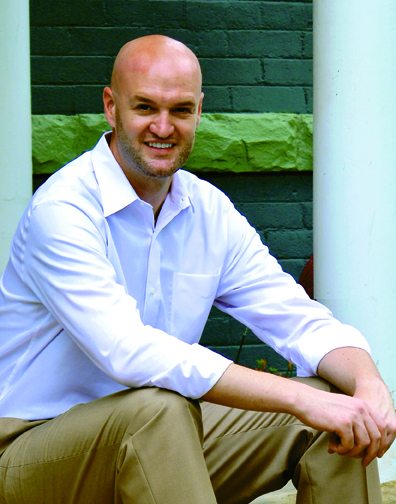
 Today in Denver a modern parallel may be occurring. A young man, Jolon Clark, was elected to Denver City Council in 2015. Joining him on the Council were the Three Musketeers of the People — Wayne New, Paul Kashmann and Rafael Espinoza. The Three Musketeers were the only City Councilmembers elected without developer money and thus free to fight the good fight against the developers’ powerful corruption of Denver.
Today in Denver a modern parallel may be occurring. A young man, Jolon Clark, was elected to Denver City Council in 2015. Joining him on the Council were the Three Musketeers of the People — Wayne New, Paul Kashmann and Rafael Espinoza. The Three Musketeers were the only City Councilmembers elected without developer money and thus free to fight the good fight against the developers’ powerful corruption of Denver.
Slowly Clark began to learn of the perfidy of many of the other nine members and their lack of ethics or honesty. The “beefy, bloated and ethically challenged” director of the Orwellian named “Denver Community Planning Development Director” Brad Buchanan makes a perfect evil Cardinal Richelieu to the weak head of state, Mayor Michael Hancock.
The first real battle that Jolon Clark and the Three Musketeers have fought together was against the small lot exemption being used by Buchanan for his real estate developer friends to build micro-housing cells free from any parking requirements. This would have made finding on-street parking in some neighborhoods difficult, if not impossible, during certain times.
The residents fighting this proposal had gone to duplicitous Council President (and mayor-in-waiting) Albus Brooks who pretended to be their friend but intended to destroy their cause with a phony moratorium. In Dumas’ novel Albus Brooks would be the treacherous Richelieu spy Milady de Winter. Brooks had set up a crooked developer controlled “Task Force” whose basic purpose was to basically give developers everything they wanted and the neighborhoods nothing.
Our heroes led by Clark took up the citizens’ cause in the nick of time. Incredibly the city staff headed by Buchanan and the phony Task Force of Brooks called for no parking restrictions on the 3,000 plus small lots across the city. If the City had adopted the same, it would have made on-street parking in neighborhood after neighborhood throughout Denver a nightmare.
This is not by accident. Buchanan and his Planning Department literally want to make parking a nightmare so that all Denver residents, other than the very wealthy, are forced to walk, ride bikes or take public transportation in Denver with a rare Uber trip allowed. The old, the infirm, the crippled are to be sacrificed on the altar of the young and healthy millennials and of course the high density real estate developers who are the true enemy of Denver neighborhoods.
With rapiers drawn, Clark, New, Kashmann and Espinoza went to work. They convinced three other councilmembers to support a compromise whereby the parking requirement exemption would only apply for housing or offices in the first story, or the first two floors if within a quarter mile of a frequent bus line or within one-half mile of a light rail station. Apparently well-connected developers can still go to the City Council for full exemptions provided notice is given to the affected neighborhoods before a vote.
The vote was 7-6 in favor of the Musketeers and Denver neighborhood on-street parking was at least partially saved. With other amendments added, the final vote was 9-2, an abject humiliation for Albus Brooks, his Task Force and Planning Director Brad Buchanan. Only Brooks and developer owned Mary Beth Susman voted against the final version. If neighborhood groups are looking for a test recall case, Brooks and Susman would certainly be the names on the top of the list.
Of course, Denver and its neighborhoods are in continued danger. It can only be hoped that the alliance formed among d’Artagnan and the Three Musketeers continues strong to beat back the endless efforts of Buchanan, the weak Mayor, and the corrupt members of the Denver Council to destroy what makes Denver a great city, its neighborhoods.
As Dumas’s Musketeers would shout: “Un pour tous, tous pour un.!” — “All for one, and one for all!”
— Editorial Board
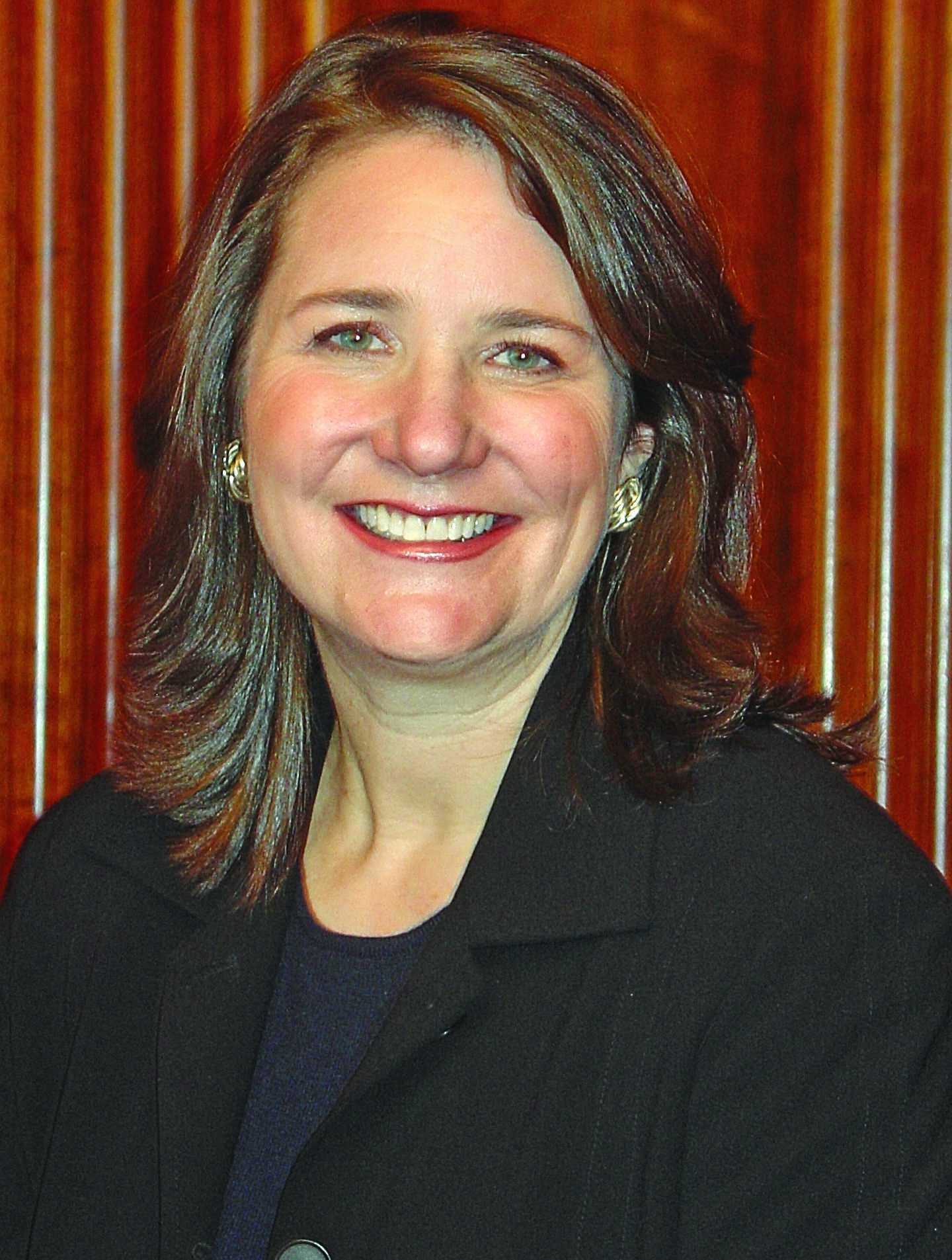
by Mark Smiley | Jun 9, 2017 | Travel
by Diana DeGette
Don’t hold me to it, but there’s a good chance that June in Washington, DC won’t be the wild roller-coaster ride that May was.
It’s no exaggeration to say that nearly every day last month brought stunning news that raised concerns about the state of our democracy, starting at the top. There was one shocking revelation after another involving Russian officials, President Donald J. Trump’s actions, the firing of FBI director James Comey, alleged conversations between Comey and President Trump, and other matters.
But as of this writing in late May, things have started to settle down — in part thanks to the appointment of a special counsel to oversee the FBI’s Russia investigation, which I had called for in a letter to Deputy Attorney General Rod Rosenstein earlier in the month while at home in Colorado.
I was especially pleased that Rosenstein tapped former FBI Director Robert Mueller, whom I know to be a man of integrity, professionalism and absolute dedication to justice.
Given the complexities of the situation and what is sure to be a thorough investigation under Mueller’s leadership, we can expect that it will be a long time before his work produces conclusions that can be shared with the public.
So maybe now we can get dispense with dramatic distractions for a while and get back to what Congress should do: pass legislation that improves life for Americans and helps make our country more secure.
If the President keeps to the promises he made in January, this would include major tax reform and an initiative to fix America’s crumbling infrastructure. But his one-page tax plan outline from late April hasn’t yet been translated to legislation, and an infrastructure bill is evidently even further down the road, since there’s been no sign of one yet.
Meantime, the House Republican leadership has forged ahead on its unilateral effort to dismantle the Affordable Care Act, jamming through a TrumpCare bill without waiting for an assessment of its costs and effects from the non-partisan Congressional Budget Office. The CBO reported in the last week of May that if this bill becomes law, it will ration care and put insurance companies back in charge. Twenty-three million people will lose their coverage within 10 years while the cost for millions others will go up — including those covered through employer plans. The onus is now on the Senate to prevent this damage.
We also should be deep into the process of preparing a budget for Fiscal Year 2018, which starts on October 1. President Trump’s budget blueprint in March, which slashed spending for important domestic and foreign policy priorities in favor of dramatically boosting the military budget, was greeted as a non-starter by congressional Republicans and Democrats alike.
The appropriations process only begins in earnest when the President presents an actual, detailed budget request to Congress, which he finally did on May 23. If enacted, this heartless and short-sighted budget proposal would cripple important domestic and international programs to create needless tax breaks for the wealthy. Republicans and Democrats alike spoke up immediately to protest it.
The delays, chaos and dysfunction that have characterized the Trump administration to date have not only affected the work of Congress. They have also undermined Americans’ confidence about where we’re headed as a country and how it affects our standing in the world.
With respect to the matters involving Russia and President Trump’s campaign and administration, the coming weeks and months will likely bring more revealing investigative reporting, along with rampant rumors, misdirection and misinformation. A truly independent, impartial Special Counsel will follow the cold, hard facts wherever they lead. And the Justice Department can determine whether there has been a violation of federal law in a way that no other approach to these issues can.
But that doesn’t rule out taking other paths to get at the truth. I have long supported the formation of an independent commission to investigate Russian interference in the 2016 election, including any possible collusion with the Trump campaign, and to ensure that such interference never happens again.
I first called for that commission in December when the intelligence community made clear that Russia had meddled in the election. That’s why I support, H.R. 356, the Protecting Our Democracy Act, which would establish such a commission. This bill has been ignored by the House Republican leadership, along with other substantive legislation intended to hold the President accountable.
An independent commission would involve experts from outside the government, who would not only seek out the facts, but also suggest solutions. The 9/11 Commission was one such effort, and its recommendations led to changes that helped make the United States safer.
Diana DeGette represents Colorado’s First District to the U.S. Congress. She serves as Chief Deputy Whip and is a senior member of the House Energy and Commerce Committee.


 Mayor Michael Hancock’s administration’s unceasing efforts to reduce parkland available to Denver residents and to monetize what remains was greatly enhanced by a scheme to turn Ruby Hill into an outdoor music venue throughout the year and convert adjoining Overland Park Golf course into a mega concert location for six weeks each summer.
Mayor Michael Hancock’s administration’s unceasing efforts to reduce parkland available to Denver residents and to monetize what remains was greatly enhanced by a scheme to turn Ruby Hill into an outdoor music venue throughout the year and convert adjoining Overland Park Golf course into a mega concert location for six weeks each summer. dds resident Paul Bodor, “I didn’t hear any downside that concerns me enough to cloud my enthusiasm.”
dds resident Paul Bodor, “I didn’t hear any downside that concerns me enough to cloud my enthusiasm.” n the proposal because with approval the city has scored an ace: The city will get between $1.5-$2 million from lease fees and seat taxes per year, more as attendance increases. District 7 City Councilman Jolon Clark calls the festival “an opportunity with an estimated $60 million economic impact.” Clark acknowledges that the money will go to the City’s general fund and not to the neighborhood. He adds, however, “I’ll fight to the death to secure the neighborhood a fair share.”
n the proposal because with approval the city has scored an ace: The city will get between $1.5-$2 million from lease fees and seat taxes per year, more as attendance increases. District 7 City Councilman Jolon Clark calls the festival “an opportunity with an estimated $60 million economic impact.” Clark acknowledges that the money will go to the City’s general fund and not to the neighborhood. He adds, however, “I’ll fight to the death to secure the neighborhood a fair share.”










